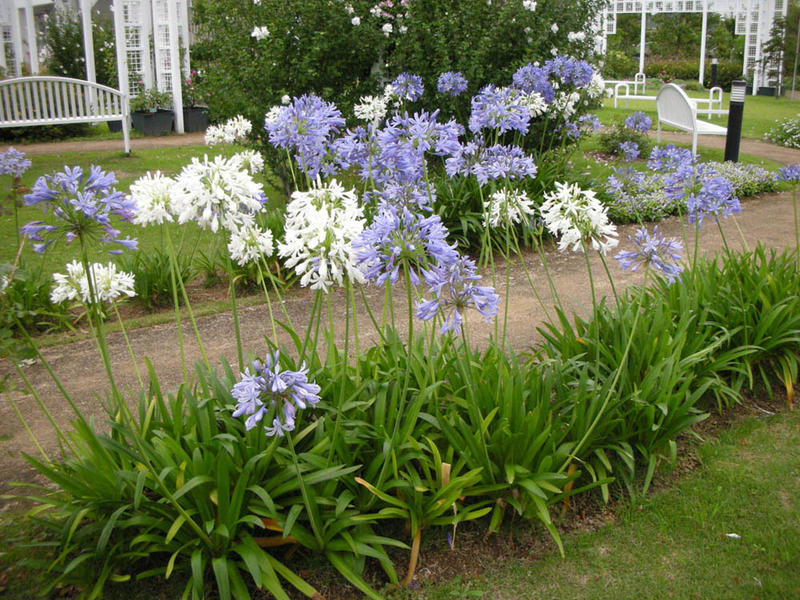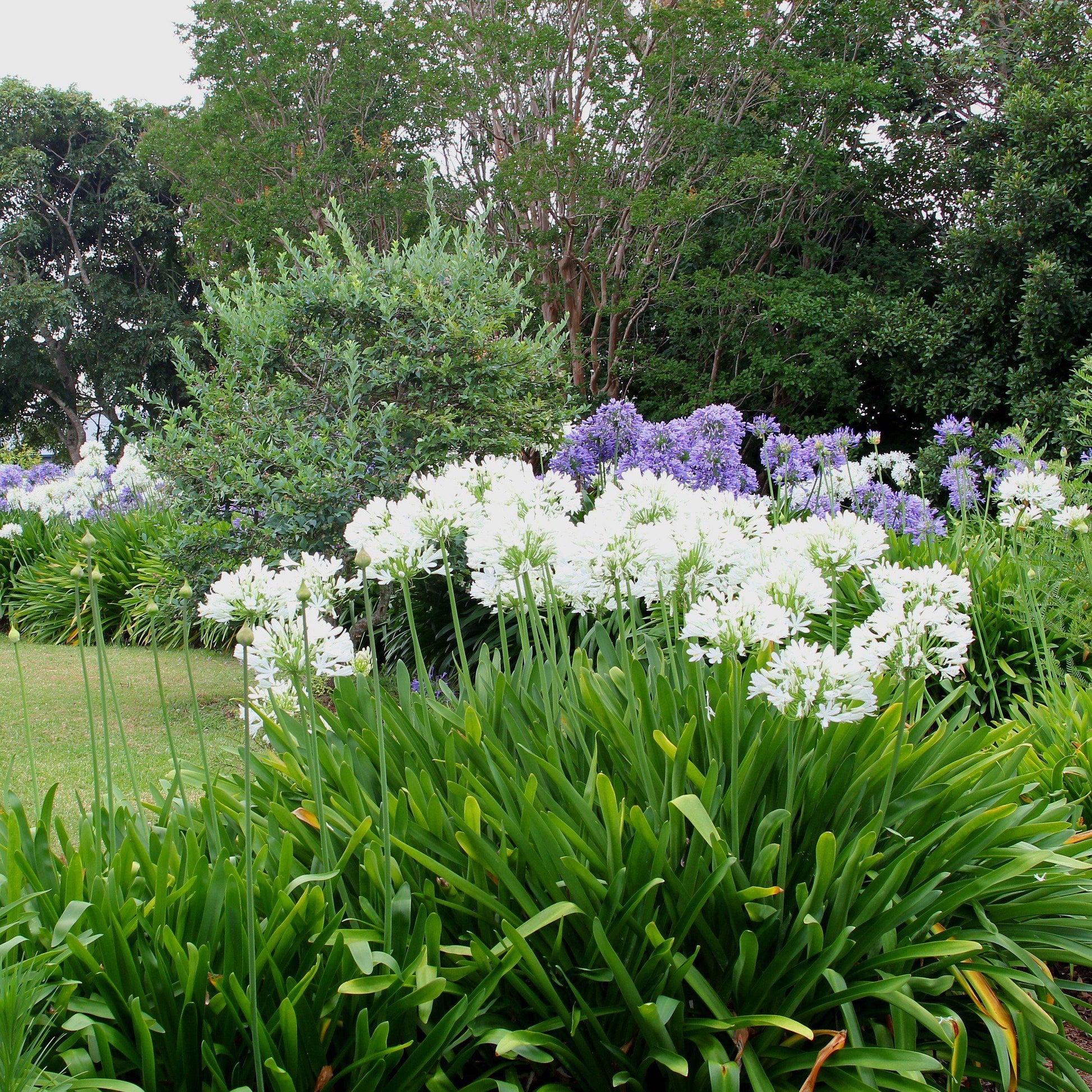Agapanthus Breeding: Tips for Expanding Your Plant Collection
Agapanthus Breeding: Tips for Expanding Your Plant Collection
Blog Article
Releasing the Secret to Successful Agapanthus Cultivation: Idea for a Flourishing Garden
In the realm of gardening, cultivating agapanthus successfully needs a calculated method that encompasses numerous aspects of plant care. With careful attention to detail, one can open the tricks to supporting these spectacular blooms, bring about a garden that thrives with charm and vibrancy. By comprehending the subtleties of agapanthus growing, one can produce a setting where these plants flourish and flower perfectly. In the following conversation, we will discover necessary tips and methods that will certainly assist you towards a flourishing agapanthus yard, offering insights into ideal practices, dirt conditions, sprinkling techniques, and a lot more.
Planting Agapanthus: Finest Practices
When growing Agapanthus, proper soil preparation is necessary for guaranteeing successful development and development of these attractive flowers. Agapanthus, commonly called Lily of the Nile or African lily, flourishes in well-draining dirt with a slightly acidic to neutral pH degree - Agapanthus. Before growing, it is essential to modify heavy clay dirts with raw material such as garden compost or peat moss to enhance water drainage and offer essential nutrients for the plants
To grow Agapanthus, pick a place that obtains full sunshine to partial color, as this will advertise healthy growth and bountiful flowering. Dig a hole two times the diameter of the plant's root ball and position the Agapanthus at the exact same depth it was formerly expanding. Carefully backfill the hole with soil, pushing down strongly to remove any kind of air pockets around the origins.
Water the newly planted Agapanthus thoroughly and continue to maintain the dirt uniformly wet, specifically throughout the plant's active growing season. Agapanthus. Using a well balanced plant food once a month can better support the plant's growth and blooming. By adhering to these ideal practices for planting Agapanthus, you can produce a sensational display of these exciting flowers in your garden
Ideal Dirt Issues for Agapanthus
For optimum development and blooming success of Agapanthus plants, ensuring the soil conditions are optimal is important. Agapanthus thrives in well-draining dirt with a somewhat acidic to neutral pH level ranging from 6.0 to 7.0. This type of soil allows for ample water drain, stopping waterlogging which can result in root rot. To enhance soil drainage, think about adding raw material such as garden compost or peat moss when preparing the planting site. Furthermore, Agapanthus prefers soil that is rich in nutrients, so incorporating a well balanced fertilizer throughout the expanding period can advertise healthy and balanced development and dynamic blooms.

Watering and Fertilizing Tips
To make sure healthy growth and dynamic blooms, correct watering and fertilizing techniques are vital for successful Agapanthus farming. Agapanthus plants take advantage of routine watering, specifically during the expanding season. It is recommended to water deeply once a week, guaranteeing the soil is damp but not waterlogged. Throughout hot weather or in pots, more frequent watering may be essential to avoid the dirt from drying totally.
When it concerns feeding Agapanthus, a well balanced fertilizer with equal components nitrogen, phosphorus, and potassium can be applied in the spring to advertise healthy and balanced development and flowering. Slow-release fertilizers are perfect for offering nutrients progressively over an extensive duration. Prevent over-fertilizing, as this can lead to extreme vegetation growth at the expense of blossoms.
In addition, including natural matter like compost right into the soil can boost nutrient levels and enhance soil framework, aiding in the overall wellness of the Agapanthus plants. By complying with these watering and fertilizing tips, garden enthusiasts can ensure their Agapanthus plants prosper and produce sensational displays of blossoms.
Pruning and Deadheading Strategies
Correct pruning and deadheading techniques play a vital role in preserving the health and aesthetic appeals of Agapanthus plants, enhancing the vital techniques of watering and feeding for successful growing. Trimming Agapanthus involves eliminating spent flower heads, dead or yellowing fallen leaves, and overall shaping of the plant to promote much better development. Deadheading, the procedure of removing discolored flowers, not only improves the plant's appearance yet also encourages additional blooming.
When deadheading Agapanthus, it is recommended to trim off the blossom stem at the base using sharp, tidy shears. This process redirects the plant's energy from seed production back into root and foliage growth, promoting a much healthier and more robust plant. Normal deadheading can prolong the flowering duration of Agapanthus and avoid self-seeding, which can bring about overcrowding.
In terms of pruning, Agapanthus normally gain from a check my reference light trim after blooming to clean up the plant and motivate fresh growth. Reducing the spent flower stems and removing any type of dead or damaged foliage helps maintain the plant's vigor and general look. Nonetheless, it is important to prevent cutting right into the crown of the plant, as this can damage its wellness.

Protecting Agapanthus From Vermins and Diseases
Carrying out efficient pest and condition monitoring methods is crucial to guarding the health and wellness and vitality of Agapanthus plants in growing. Agapanthus are typically hardy plants, yet they can still succumb to numerous bugs and diseases otherwise effectively looked after. One typical pest that influences Agapanthus is the Agapanthus borer, a caterpillar that passages into the plant, creating damage to the fallen leaves and flowers. To stop invasions, regular examination of the plants is necessary. If borers are found, they can be manually eliminated, or insecticidal soap can be utilized as a control see this site measure.
In addition to insects, Agapanthus are vulnerable to diseases such as root rot and fungal fallen leave places. By remaining watchful and resolving pest and disease issues promptly, gardeners can aid their Agapanthus thrive and flourish.

Conclusion
In conclusion, effective farming of agapanthus needs proper growing methods, excellent dirt problems, sufficient watering and feeding, routine pruning and deadheading, and protection from diseases and pests. By following these tips and tricks, garden enthusiasts can guarantee a growing garden loaded with lovely agapanthus blossoms. Agapanthus. Keep in mind to maintain constant treatment and attention to information to promote the health and wellness and long life of these spectacular plants
When growing Agapanthus, correct dirt prep work is important for making sure successful growth and development of these lovely blossoms.Water the freshly grown Agapanthus completely and proceed to keep the dirt evenly damp, particularly throughout the plant's energetic growing period.For optimum growth and growing success of Agapanthus plants, making sure the soil conditions are ideal is important. When transplanting or growing Agapanthus, useful reference guarantee the soil is well-prepared to supply the essential foundation for the plants to establish themselves effectively. One usual pest that affects Agapanthus is the Agapanthus borer, a caterpillar that passages into the plant, creating damage to the leaves and blossoms.
Report this page